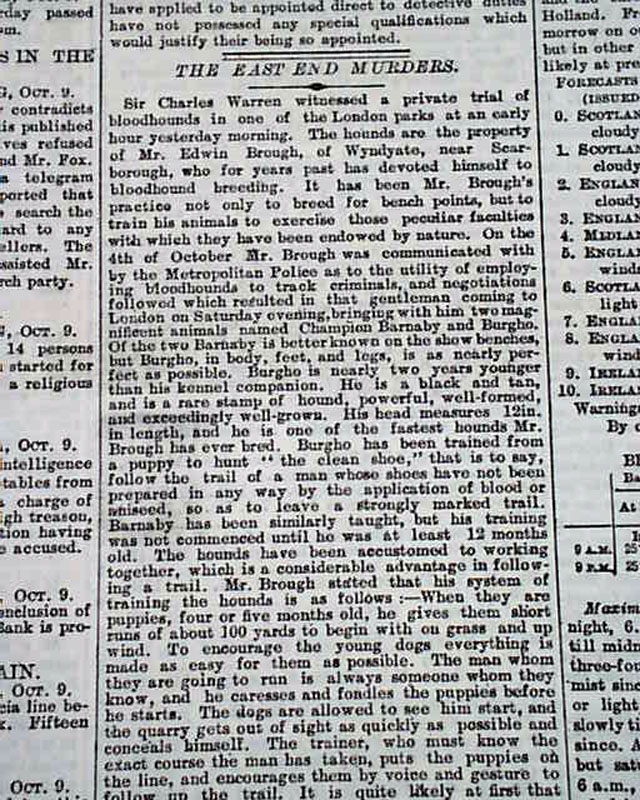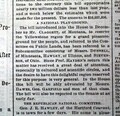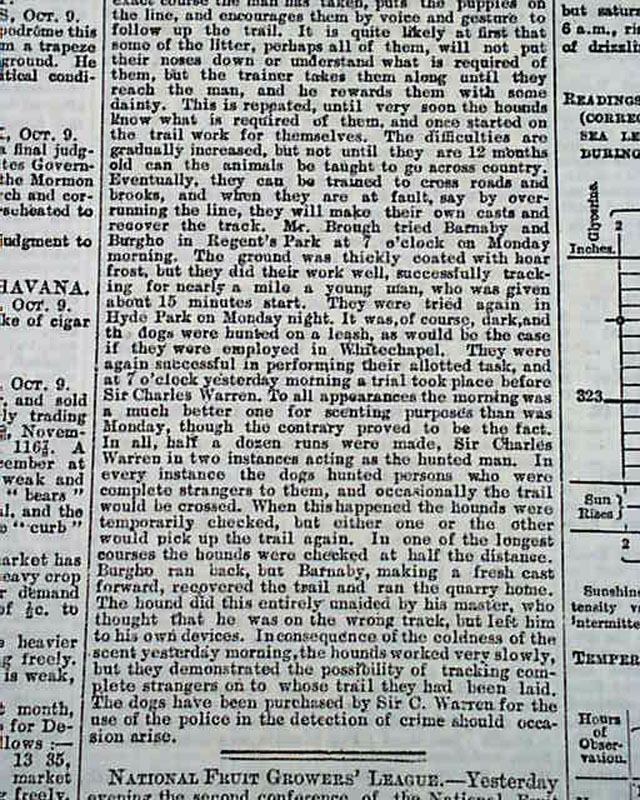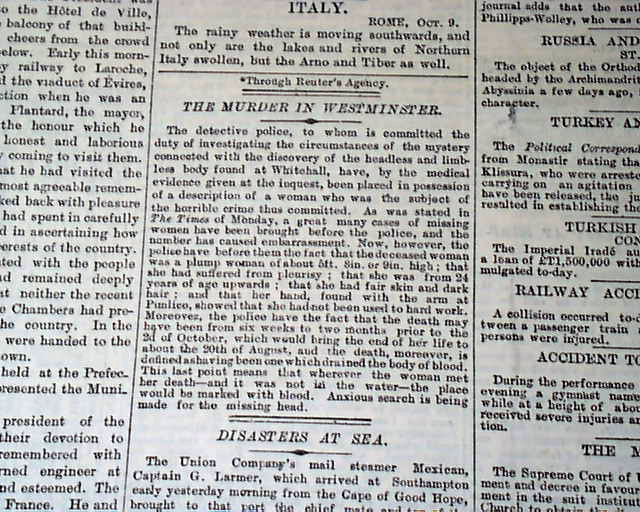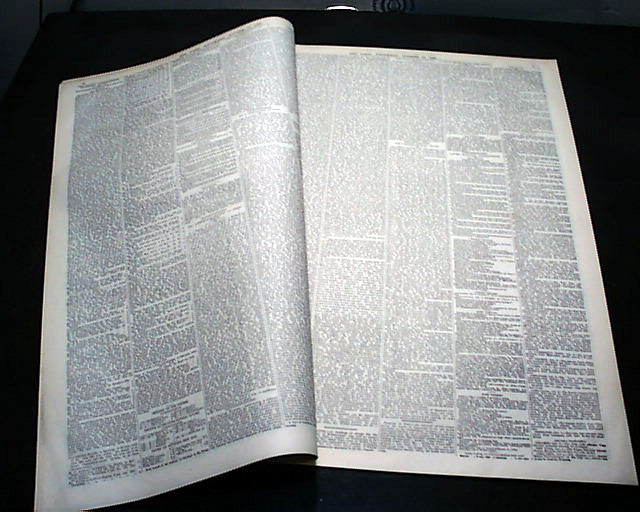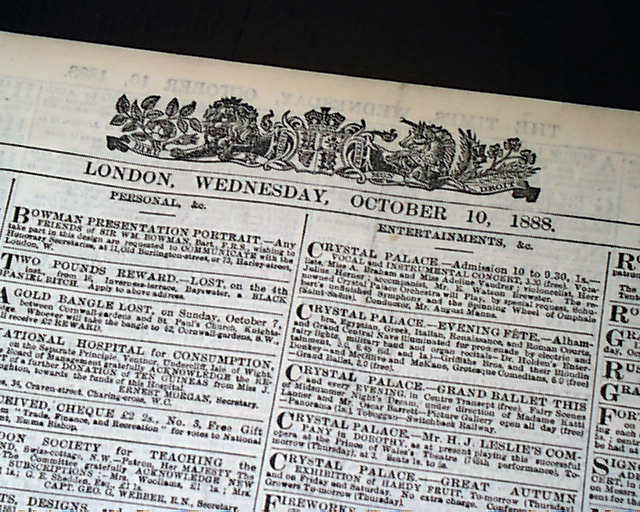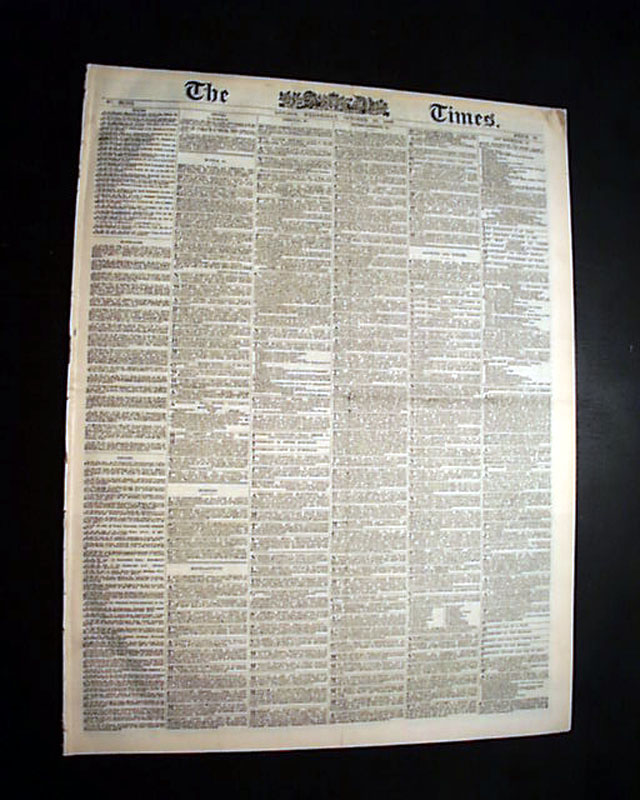Home >
Much on use of bloodhounds to track criminals...
Much on use of bloodhounds to track criminals...
Item # 705333
October 10, 1888
THE TIMES, London, England, Oct. 10, 1888
* Jack the Ripper Whitechapel murders
* Best title to be had (very rare as such)
"Jack the Ripper" reports were common in the latter half of 1888, capturing the interest of people on both sides of the Atlantic as evidenced by the reports in many newspapers in the United States. It was the international "sensation" of the era, and a case which was never conclusively solved. Not surprisingly, issues of the respected "Times" newspaper from London are the most sought after, being the primary source for Jack the Ripper reports.
Page 5 has a report headed: “The East End Murders” and gives much detail on the breeding and use of bloodhounds for tracking people, noting: “Sir Charles Warren witnessed a private trial of bloodhounds in one of the London parks…the dogs were hunted on a leash, as would be the case if they were employed in Whitechapel…” and more.
Complete in 16 pages, very nice condition.
background: In 1888, during the height of the Jack the Ripper murders, Metropolitan Police Commissioner Sir Charles Warren considered using bloodhounds to aid the investigation, a decision that has since been scrutinized for its poor execution. Following intense public pressure after the murder of Annie Chapman, Warren arranged trials with two specially trained bloodhounds, Burgho and Barnaby, handled by Edwin Brough. The trials in Hyde Park were promising, with the dogs successfully tracking scents, including Warren’s own, demonstrating their potential value. However, despite this success, the dogs were never deployed in the Whitechapel investigations. Reasons for this included logistical concerns about using dogs in a crowded urban environment, lack of formal protocols, and Warren’s own indecisiveness amid increasing political pressure. Additionally, the dogs were temporarily withdrawn by Brough due to the police’s lack of preparedness, and Warren later claimed they had gone missing, adding to the confusion. Ultimately, the failure to utilize the bloodhounds became emblematic of the Metropolitan Police’s disorganized response, and it remains a controversial footnote in the legacy of the Ripper case and Warren’s troubled tenure.
Category: Post-Civil War


